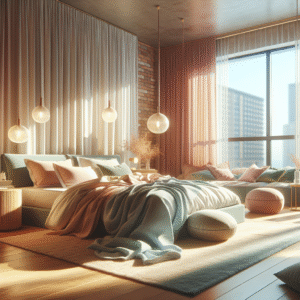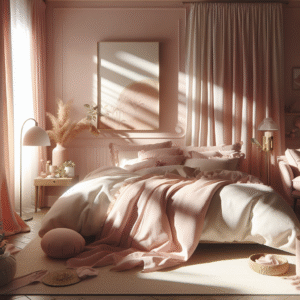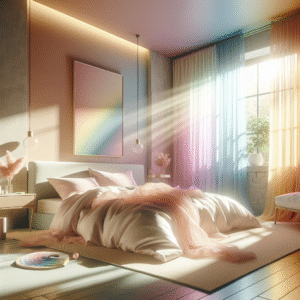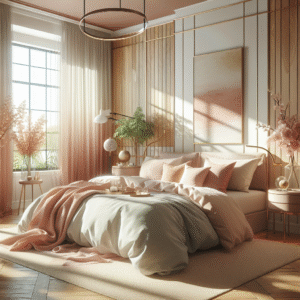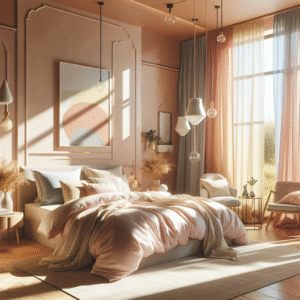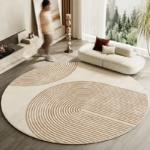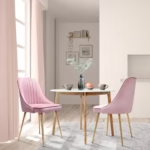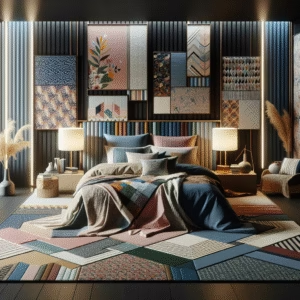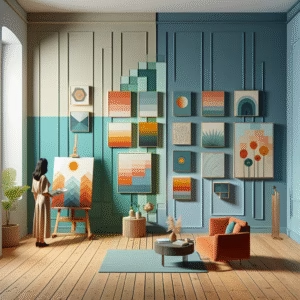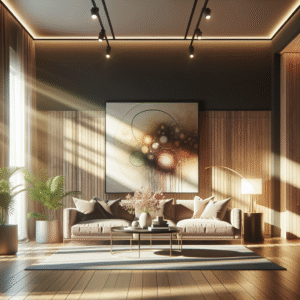Spring! Just saying the word conjures images of blooming flowers, chirping birds, and that oh-so-welcome sunshine. But how do you bring that feeling *inside* your home? You know, beyond just opening the windows (though, definitely do that!). Answer: Butter yellow. Trust me. It’s the secret weapon you didn’t know you needed.
Why Butter Yellow? It’s More Than Just a Trend.
So, why butter yellow and not, say, sunshine yellow or lemon yellow? It’s all about the subtlety. Butter yellow is soft, inviting, and surprisingly versatile. It’s not as loud as some of its brighter cousins, which means it plays well with other colors and styles. It’s like the Switzerland of the color world; it’s neutral enough to get along with everyone, but interesting enough to bring character to the table (or the wall, as the case may be).
The Psychology of Yellow: A Quick & Sunny Detour
Color psychology is a real thing! Yellow, in general, is associated with happiness, optimism, and energy. It can boost your mood and even stimulate creativity. But too much bright yellow can be overwhelming, even agitating. Butter yellow, on the other hand, brings the positive associations without the intensity. It’s like a gentle hug for your senses, not a caffeine-fueled jolt.
Let me explain – the gentle, subdued nature of butter yellow makes it ideal for spaces where you want to relax and unwind, like bedrooms or reading nooks. It creates a sense of warmth and comfort, without being overbearing. Think of it as the visual equivalent of a cashmere blanket on a slightly chilly spring evening.
From Walls to Accents: Ways to Weave in Butter Yellow
Alright, so you’re intrigued. Great! Let’s ditch some of that stuffy “interior design-speak” and get practical, shall we? Here are some genuinely useful ways to integrate butter yellow into your home:
- Walls: Okay, let’s start big, but be careful and do some test swatches and compare them in different light conditions.
- Furniture: A butter yellow sofa or armchair can instantly brighten up a living room. If you’re feeling bold, go for it! If not, smaller pieces like side tables or ottomans can also add a pop of color.
- Textiles: Think throw pillows, blankets, curtains, and rugs. These are relatively inexpensive and easy to swap out, making them a great way to experiment with butter yellow without making a long-term commitment. (Hey, we’ve all been there with paint colors, right?)
- Accessories: Vases, lamps, picture frames, even kitchenware can all contribute to the overall butter yellow vibe. Look for items with interesting textures or patterns to add visual interest.
- Flowers: Don’t underestimate the power of fresh flowers! Yellow tulips, daffodils, or even sunflowers can bring a touch of spring indoors and complement your butter yellow décor.
Butter Yellow & Complementary Colors: Finding the Perfect Match
Okay, so butter yellow is awesome, but it doesn’t live in a vacuum, right? Understanding its best color friends is crucial for creating a harmonious and visually appealing space. Here are a few winning combinations:
- Gray: This is a classic pairing for a reason. Gray provides a sophisticated backdrop that allows the butter yellow to really shine. Think light gray walls with butter yellow accents, or a butter yellow sofa in a room with gray furniture.
- White: Crisp white walls and butter yellow accents create a fresh, airy, and inviting space. It’s perfect for minimalist or Scandinavian-inspired interiors where you want to add a touch of warmth and personality.
- Blue: This is where things get interesting. Soft blues, like powder blue or robin’s egg blue, create a calming and serene atmosphere when paired with butter yellow. It’s a great combo for bedrooms or bathrooms.
- Green: Think of a field of wildflowers! Combining butter yellow with soft greens like sage or olive green brings a sense of nature indoors. It’s a great look for living rooms or sunrooms. Just don’t overdo it on the green if you fear it may overwhelm you!
- Wood Tones: Whether it’s light oak or rich walnut, natural wood tones add warmth and texture to any space. Butter yellow complements wood beautifully, creating a cozy and inviting atmosphere.
Beyond the Obvious: Creative Butter Yellow Ideas
Ready to get a little adventurous? Great! Let’s brainstorm some less-conventional ways to incorporate butter yellow into your home:
- Painted Furniture: Give an old dresser or side table a fresh coat of butter yellow paint for a unique and eye-catching piece. Sanding it down beforehand is essential especially if the base layer has already been painted!
- Kitchen Cabinets: For a truly bold statement, consider painting your kitchen cabinets butter yellow. This works especially well in smaller kitchens, as it can help to make the space feel larger and brighter.
- Accent Walls: Instead of painting an entire room butter yellow, try just one wall. This is a great way to add a pop of color without overwhelming the space.
- DIY Projects: Get crafty and create your own butter yellow décor! Paint a canvas, sew a pillow cover, or even decoupage a piece of furniture.
Don’t Forget the Little Things: Butter Yellow Details That Make a Difference
Sometimes, the smallest touches have the biggest impact. Don’t underestimate the power of details when it comes to incorporating butter yellow into your home. Here are a few ideas:
- Hardware: Replace your cabinet knobs or drawer pulls with butter yellow ones for a subtle yet stylish change.
- Artwork: Hang a butter yellow-themed painting or print to add a focal point to your room.
- Books: Arrange books with butter yellow covers on your shelves for a cohesive and intentional look.
- Trays and Bowls: Use butter yellow trays and bowls to display your favorite items or serve snacks in style.
Butter Yellow Through the Year: Adapting to Different Seasons
While butter yellow is particularly perfect for spring, it can actually work year-round with a few clever adjustments.
- Spring: Embrace the freshness of the season by pairing butter yellow with bright whites, soft greens, and floral patterns.
- Summer: Keep things light and airy by combining butter yellow with nautical blues, sandy beiges, and natural textures like rattan and linen.
- Autumn: Cozy up your space for fall by pairing butter yellow with warm oranges, browns, and reds. Think chunky knit blankets and spiced candles.
- Winter: Add a touch of cheer to the colder months by combining butter yellow with metallics like gold and silver, as well as rich jewel tones like emerald green and sapphire blue.
Mistakes to Avoid: Butter Yellow Decorating No-Nos
It’s easy to get excited about butter yellow and go overboard. It’s a happy color! But here’s a simple list of things you should definitely *not* do.
Make sure your house, no matter how “bold” you’re going, doesn’t end up looking like you’re endorsing a local sports team!
So, let’s recap:
- Too Much of a Good Thing: As with any color, it’s possible to overdo it with butter yellow. Use it as an accent, not the main event.
- Ignoring Lighting: Butter yellow can look different depending on the lighting. Always test your paint colors in various light conditions before committing.
- Clashing with Existing Décor: Make sure your butter yellow choices complement your existing furniture and accessories. Don’t try to force it if it doesn’t work.
- Forgetting About Texture: Adding texture through fabrics, rugs, and accessories can help to ground a butter yellow space and prevent it from feeling flat.
Finding Your Perfect Shade: A Guide to Butter Yellow Variations
“Butter yellow” isn’t just one color! There’s a whole spectrum of shades, each with its unique character. Here’s a peek at some popular varieties:
- Pale Butter: This is the lightest and most delicate shade of butter yellow. It’s perfect for creating a soft and romantic atmosphere.
- Classic Butter: A true butter yellow that strikes a balance between warmth and brightness. It’s versatile and works well in a variety of styles.
- Creamy Butter: This shade has a touch of creaminess to it, making it feel especially cozy and inviting.
- Lemon Butter: A slightly brighter and more citrusy version of butter yellow. It adds a pop of energy to any space.
Here’s the thing: you really should use a paint color visualizer from companies like Sherwin-Williams Sherwin-Williams Color Visualizer or Behr Behr Paint Colors to see how the different hues work in different rooms!
Butter Yellow: Not Just for Interiors
Who says butter yellow is only for indoor spaces? Bring that sunny vibe to your porch, deck, or garden with these outdoor ideas:
- Front Door: A butter yellow front door is a cheerful way to welcome guests. Pair it with potted plants and a cute doormat.
- Patio Furniture: Spruce up your patio with butter yellow cushions, umbrellas, or even painted furniture.
- Planters: Use butter yellow planters to add a pop of color to your garden or balcony.
- Outdoor Lighting: Hang butter yellow string lights or lanterns to create a cozy and inviting outdoor atmosphere.
The Verdict: Is Butter Yellow Right for You?
Hopefully, by now you’ve got a good grasp on the magic of butter yellow. Is it right for everyone and every home? Well, probably not. But if you’re looking to add some warmth, cheer, and sophistication to your space, it’s definitely worth considering.
So, are you ready to embrace the butter yellow secret? I think you know the answer already – Go on, paint that wall!
FAQ – Frequently Asked Questions
DISCLAIMER
The information provided in this article is for general informational purposes only. Decorating and color choices are subjective and what works for one person’s home may not work for another. Always test paint colors in your own home before committing. The author and publisher are not responsible for any errors or omissions, or for any actions taken based on the information contained herein.
document.addEventListener(‘DOMContentLoaded’, function() {
var faqQuestions = document.querySelectorAll(‘.faq-question’);
faqQuestions.forEach(function(question) {
question.addEventListener(‘click’, function() {
var answer = this.nextElementSibling;
answer.classList.toggle(‘show’);
});
});
});
Categories
- Art Curation & Gallery (15)
- Bedding Style Trends (33)
- Bedroom Makeover (18)
- Furniture Care (20)
- Home Decor & Design Ideas (96)
- Living Room Decor (19)
- Mix & Match Techniques (19)
- Rug Sizing & Placement (19)
- Seasonal Home Decor (19)
- Wall Art & Painting Tips (18)
Recent Posts
Recent Comments
Archives
Product Gallery
-
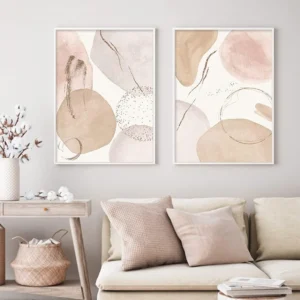 Abstract Bohemian Geometric Beige Poster Canvas Painting Wall Art Printing Picture Bedroom Living Room Home Decoration Picture
$3.82 – $22.12Price range: $3.82 through $22.12
Abstract Bohemian Geometric Beige Poster Canvas Painting Wall Art Printing Picture Bedroom Living Room Home Decoration Picture
$3.82 – $22.12Price range: $3.82 through $22.12
-
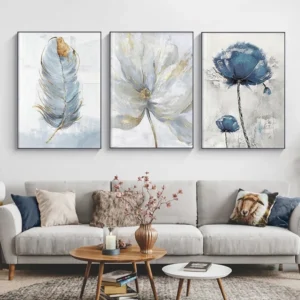 Scandinavian Flower Canvas Posters Nordic Art Wall Painting Print Abstract Flowers Feather Decoration Picture for Living Room
$5.73 – $32.74Price range: $5.73 through $32.74
Scandinavian Flower Canvas Posters Nordic Art Wall Painting Print Abstract Flowers Feather Decoration Picture for Living Room
$5.73 – $32.74Price range: $5.73 through $32.74
-
 Abstract Native Indian riding Horse Figure Painting Canvas Posters and Prints Cuadros Art Wall Picture vintage room decor
$3.80 – $26.44Price range: $3.80 through $26.44
Abstract Native Indian riding Horse Figure Painting Canvas Posters and Prints Cuadros Art Wall Picture vintage room decor
$3.80 – $26.44Price range: $3.80 through $26.44






